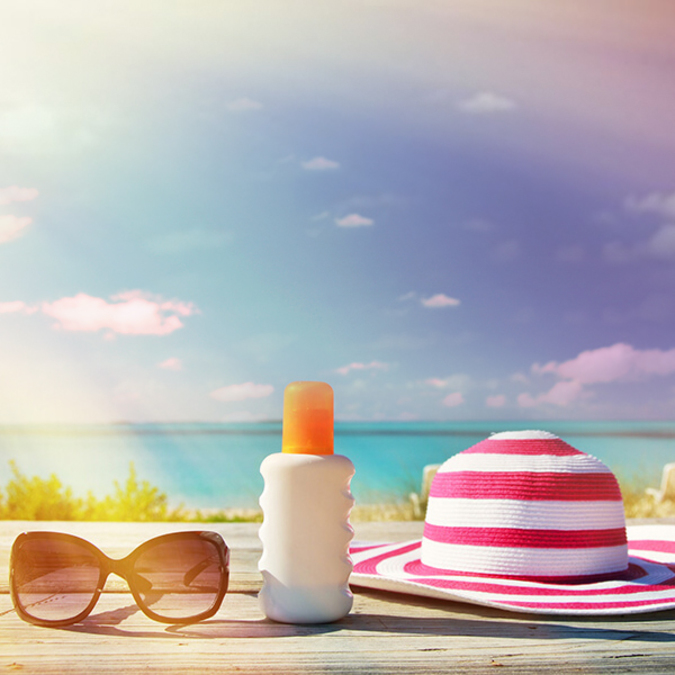Summer is here and so are the reasons to get out and enjoy the sunshine. However, sun exposure is also the main contributing factor to skin cancer.
Additionally, certain risk factors may increase your chances of getting skin cancer, such as having fair skin and blonde hair. Others with immediate family who have had skin cancer have an increased risk, along with those who live in warm and sunny climates.
Here are four simple ways to lower your overall risk of skin cancer this summer and in the future:
1. Wear sunscreen correctly
Many people wear sunblock or sunscreen on occasion, and certain types can reduce your risk of skin cancer better than others.
There are two main types of ultraviolet radiation: UVA and UVB. UVB rays are the main cause of sunburn, while UVA rays contribute to older looking skin (photoaging) and many types of skin cancer.
Use a sunscreen that protects against both UVA and UVB. Also, pay attention to SPF, the Sun Protection Factor, which indicates how well sunscreen protects your skin from UVB rays. If it normally takes your skin 20 minutes to burn without sunscreen, an SPF 15 sunscreen will increase that window 15 times, meaning you’d have a window of about five hours before burning.
SPF 15 works well when used in a daily routine, perhaps mixed with your facial moisturizer. However, if you know you’ll be outside for an extended period, wear SPF 50 and reapply at least every two hours. Swimming and sweating will decrease the effectiveness of your sunscreen, no matter how high its SPF.
Since 2011, Food and Drug Administration guidelines have made it easier to choose the best sunscreen, with labeling that specifies what types of rays are blocked, as well as reducing false claims of “waterproof” formulas that don’t work after your skin gets wet.
2. Avoid skin-damaging rays
“Sun protection involves several different things," says Dr. Pranav Sheth, a dermatologist at TriHealth. "Many people think of sunscreen, but that’s not the only way to get sun protection.”
In fact, one of the greatest offenders to your skin and its health comes from tanning beds.
“Those who use a tanning bed one time are already at a 50 percent higher risk for getting melanoma than someone who has never gone,” says Dr. Erik Dunki-Jacobs, a surgical oncologist at the TriHealth Cancer Institute.
Many hours in direct sunlight is also a common culprit for skin cancer. Avoid being in direct sunlight between 10 a.m. and 4 p.m. This simple step will greatly reduce your risk of skin damage from sunlight.

3. Be conscious year-round
Some of the most careful people still end up getting skin cancer because they don’t account for sun exposure in the winter.
It may be cold, but that doesn’t mean the sun’s rays are no longer harmful. The sun still shines in winter and even reflects off snow to burn skin and cause damage. Wear sunscreen year-round to avoid the risk.
It’s also a good idea to perform monthly self-examinations in front of a full mirror to identify dangerous changes to your skin. Keep an eye out for anything new that grows and changes over time, such as a multicolored mole or skin tag. If the area is larger than a pencil eraser or has become irregular in color or border, immediately get it checked by a dermatologist, such as one of the experts at TriHealth.
4. Cover up
This seems so simple, yet few people follow this advice. Sun damage causes more damage to your skin than smoking, so if you want to keep your skin looking young, cover up with long sleeves and pants, collars and wide-brimmed hats.
As you follow these steps, you’ll be able to have fun in the sun without the worry.

